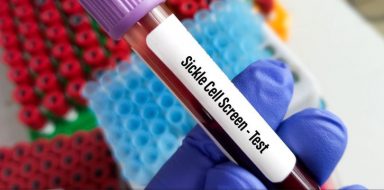Top Hairstyles For Women With Alopecia Hair Loss
Hair loss can impact a woman's self-esteem and overall confidence. However, hair loss doesn't mean you should compromise on style and beauty. With the right hairstyles, women with alopecia can feel empowered. This article explores the ten best hairstyles for women with alopecia and discusses the causes, signs and symptoms. We will also look at treatment options, including Litfulo as a medication prescribed once daily to treat severe alopecia areata in individuals aged 12 years and above.
The 10 Best Hairstyles for Women with Alopecia
1. Pixie Cut
A pixie cut is a short, chic hairstyle that can be a great choice for women with hair loss. It requires minimal maintenance and can help draw attention to your face instead of your scalp.
This article will look at 14 signs of sickle cell disease. Read on to learn about what you should be watching out for.
2. Bob Cut
A bob cut is a classic hairstyle that can be tailored to suit your unique needs. Whether it's a chin-length bob or a shoulder-length one, this hairstyle can add volume and fullness to your hair, making it a great option for those with thinning hair.
3. Layered Cut
Layered haircuts are great for adding depth and dimension to your hair. By adding layers, you can create an illusion of thicker hair, making it an ideal choice for women with hair loss.
4. Braids
Braided hairstyles can be an excellent way to conceal thinning or balding areas. Whether it's a simple side braid or an elaborate updo, braids offer a stylish solution for women with alopecia.
5. Half-Up Half-Down
The half-up half-down hairstyle is a versatile option for women with hair loss. You can create volume on the top by teasing your hair and securing it with bobby pins or a small clip. Leaving the rest of your hair down adds an elegant touch to the overall look.
6. Headscarf
A headscarf can be a fashionable and practical option for women with alopecia. It allows you to cover any bald patches or thinning areas while making a fashion statement. You can experiment with different colors, patterns and styles to brighten up your outfit.
7. Messy Bun
The messy bun is a trendy and effortless hairstyle that can help you feel put together even with hair loss. This style works best for medium to long hair and can be achieved by loosely gathering your hair at the crown and securing it with a hair tie.
8. Top Knot
Similar to the messy bun, the top knot gives you a chic and stylish look while providing coverage for thinning areas. This hairstyle can be achieved by pulling all your hair up into a bun at the top of your head.
9. Wigs and Hairpieces
Wigs and hairpieces can be a game-changer for women with severe hair loss. There are countless options available, ranging from synthetic wigs to human hair wigs. Experiment with different styles, colors and lengths to find the one that suits you best.
10. Embracing Your Natural Look
Sometimes, the best hairstyle is no hairstyle at all. Embracing your natural look with confidence and acceptance can be a powerful statement. Enhance your existing hairline with accessories like headbands or clips and embrace the beauty of being unique.
Understanding Alopecia
Alopecia, commonly known as hair loss, is a chronic condition that can occur in both men and women. It is an autoimmune disorder in which the body's immune system mistakenly attacks the hair follicles, causing hair loss. The exact cause of alopecia is still unknown, but it is believed to be a combination of genetic and environmental factors.
Signs and Symptoms of Alopecia
The signs and symptoms of alopecia can vary from person to person. The most common type of alopecia is alopecia areata, which causes round patches of hair loss on the scalp. In addition to hair loss, other signs and symptoms may include:
- Patchy or circular bald spots.
- Thinning or fragile hair.
- Itching or tingling sensation on the scalp.
- Regrowth of white or gray hair in affected areas.
- Changes in nail texture or appearance.
Treatment Options for Alopecia
Here are a few common treatment options for alopecia.
Topical Treatments: Topical corticosteroids, such as creams or ointments, can help reduce inflammation and promote hair regrowth. Minoxidil, an over-the-counter medication, is also commonly used to stimulate hair growth.
- Oral medications: Oral medications, such as corticosteroids or immune suppressants, may be prescribed in severe cases to suppress the immune system's attack on hair follicles.
- Injections: Intralesional corticosteroid injections are often used to treat alopecia areata. These injections are directly administered into the affected area to stimulate hair regrowth.
- Topical immunotherapy: Topical immunotherapy involves applying a chemical, such as diphencyprone (DPCP), to the scalp to provoke an allergic reaction. This reaction can help stimulate hair regrowth in some cases.
- Hair transplantation: For individuals with advanced hair loss, hair transplantation may be an option. This procedure involves transferring hair follicles from one part of the body to the affected areas.
- Litfulo: Litfulo is a medication predominantly utilized to address severe alopecia areata in individuals aged 12 years and above. As a kinase inhibitor, it functions by attaching itself to particular proteins within the immune cells that are responsible for assaulting hair follicles. By doing so, it reduces the number of hair follicles targeted by immune cells, consequently reducing inflammation and diminishing hair loss.
Chic and Confident
Hair loss can be a challenging experience, but it doesn't mean you have to compromise on style and confidence. Remember, you are beautiful just the way you are and your hair does not define your worth.
Take a look at some great hair care products.







